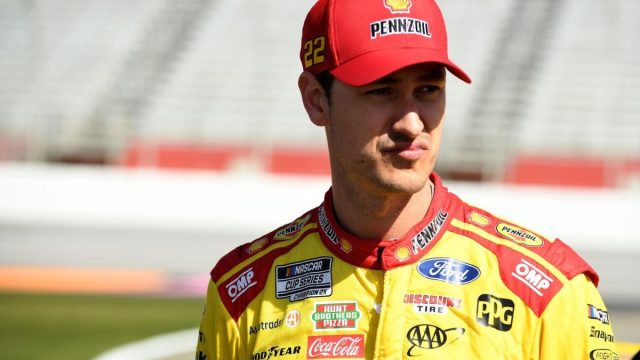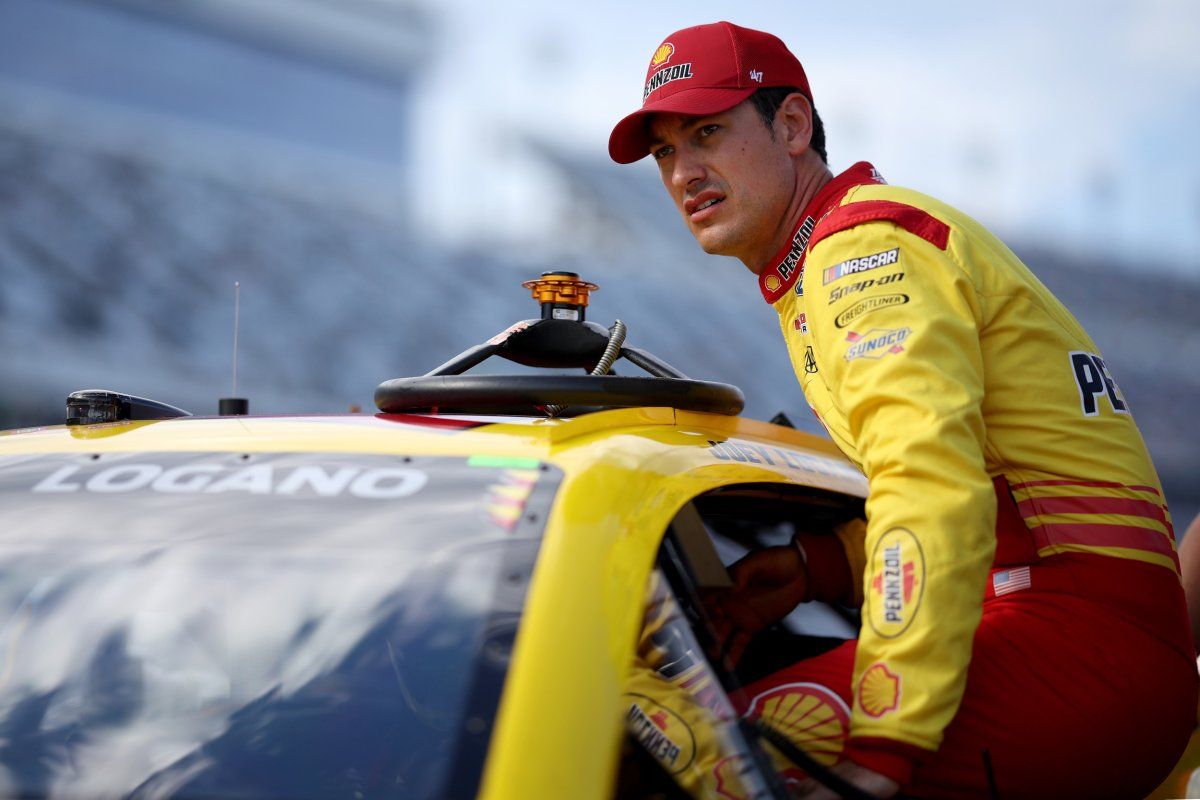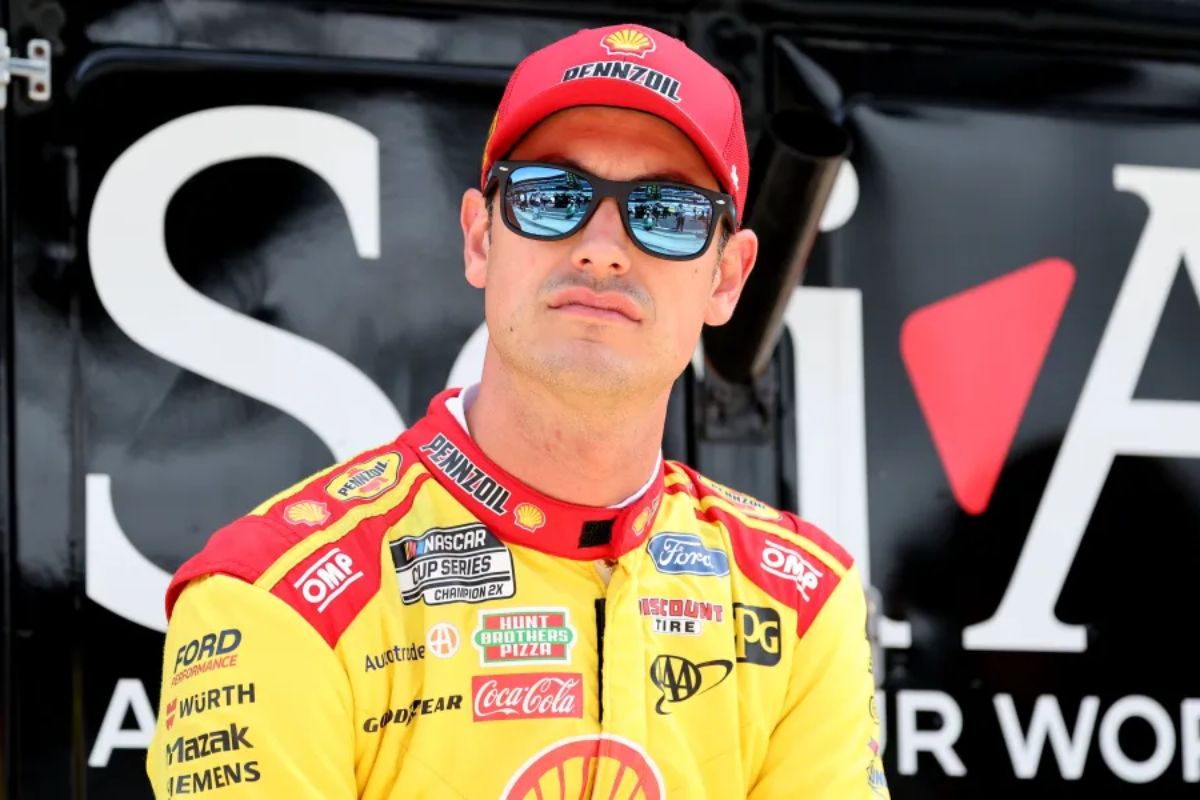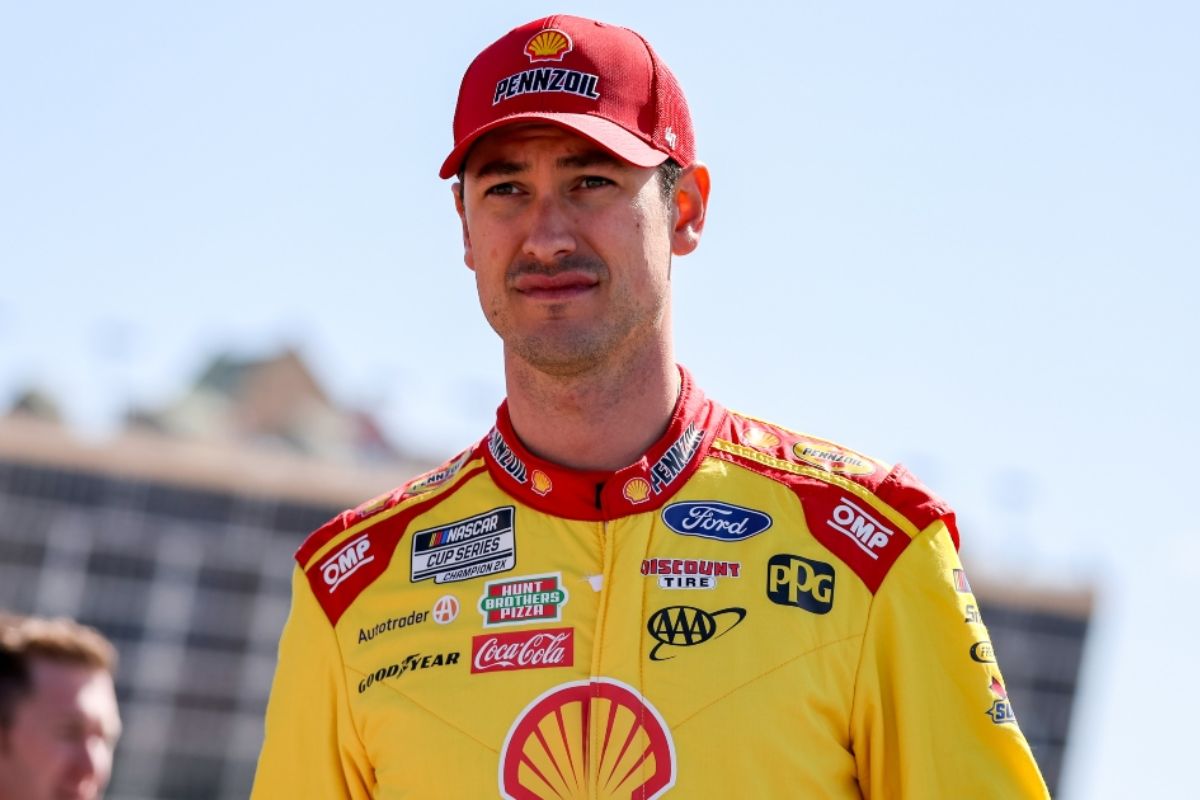Joey Logano Proposes a Controversial Fix: In light of the increasing frequency of dangerous incidents on the track, Joey Logano has proposed a notable modification to NASCAR’s Next Gen cars by advocating for the removal of the rear diffuser. Logano contends that the current underbody design contributes to a heightened risk of cars flipping over after minor collisions, raising concerns about driver safety. His suggestion to revert to a splitter-based design aims to improve vehicle stability. However, this proposal has sparked a debate among industry stakeholders, prompting questions about the balance between safety and performance in the sport’s evolving landscape. What implications could this have for NASCAR’s future?
Key Highlights
- Joey Logano proposes removing the rear diffuser to reduce the risk of cars flipping during races, improving overall driver safety.
- He compares the current car design to a kite, emphasizing how it increases the likelihood of lift and accidents.
- Logano advocates for returning to a previous design featuring a splitter, which may enhance stability and grip during races.
- His safety proposals arise from increasing incidents and a collective driver concern for enhanced protective measures in NASCAR.
- Logano’s suggestions highlight ongoing debates within NASCAR about balancing speed with necessary safety improvements for drivers.
Introduction and Overview
In recent discussions about NASCAR’s future, it is frequently noted that the introduction of Next Gen race cars was heralded as a groundbreaking innovation for the sport. Promoted as a transformative leap forward, these vehicles were expected to improve both performance and safety, thereby elevating the comprehensive racing experience.
However, the reality has been markedly different, as a wave of criticism from drivers and the broader community has surfaced, questioning the efficacy of these advancements. Despite their modern design and technological improvements, the Next Gen cars have faced considerable backlash.
Concerns about safety have reached a boiling point, particularly following incidents where cars have flipped into the air, reminiscent of toys rather than high-performance racing machines. Such occurrences not only jeopardize the safety of drivers but also pose an alarming risk to spectators, further complicating NASCAR’s reputation as a premier motorsport.
This discontent has prompted a call for reassessment and reform within NASCAR, as stakeholders grapple with the implications of these design shortcomings. In this situation, Joey Logano’s recent proposal for a controversial fix has ignited a debate about the future direction of the series.
As the NASCAR community continues to navigate these challenges, the need for a balanced approach that prioritizes both innovation and safety remains essential. Understanding the nuances of this situation is vital for fans, analysts, and industry experts alike, as we collectively seek to guarantee the sport’s integrity and its commitment to the well-being of all involved.
Recent Incidents
Amid rising concerns over safety in NASCAR, recent incidents involving Next Gen race cars have drawn considerable attention, particularly due to their alarming tendency to flip in the air following even minor contact. The phenomenon became clearly evident during Corey Lajoie’s wreck at Michigan International Speedway, where the car’s aerodynamic design failed to maintain stability after a seemingly innocuous collision. This trend was further exemplified at Daytona, where Josh Berry experienced a catastrophic crash, again highlighting the precariousness of the current vehicle configuration.
The issue of cars flipping has sparked a wave of anxiety among drivers, teams, and fans alike, as it raises fundamental questions about the safety measures in place. The Next Gen cars were designed with a focus on improved performance and cost-effectiveness, yet these recent incidents suggest a critical oversight in ensuring driver safety during accidents.
Even the presence of shark fins, intended to improve downforce and stability, has proven insufficient in preventing airborne flips after collisions.
As these incidents accumulate, the urgency for a reassessment of car design and safety protocols becomes increasingly clear. The implications of these events extend beyond the race track, as they challenge NASCAR’s commitment to driver safety and the integrity of the sport.
Joey Logano’s Proposal
While the safety of NASCAR drivers remains a pressing concern, Joey Logano has put forth a compelling proposal aimed at mitigating the risks associated with the Next Gen race cars. Central to Logano’s argument is the rear diffuser, a new component intended to improve downforce by sealing the underbody of the car. However, he contends that this design may inadvertently contribute to the alarming incidents of cars flipping during races.
Logano suggests that reverting to the previous design, which included a splitter and eliminated the diffuser, could greatly enhance safety. He highlights that the current underbody design resembles that of a kite, making the cars susceptible to lift when exposed to high winds. In his assessment, the diffuser’s function of maintaining grip may paradoxically increase the risk of airborne accidents.
The Penske driver stresses the importance of exploring alternatives, stating, “I think the only option is to take that diffuser off.” His insights resonate with a broader audience seeking to balance innovation in car design with the fundamental necessity of driver safety.
I think one of the best options probably would be to put a splitter back into the thing and took the underbodies off, go back to where we were. I got to think that’s kinda the only thing you can do to fix it. We can’t put weight in the car; that’s not gonna be the answer. So I think the only option is to take that diffuser off.”
“To me, I don’t have an engineering degree. I would say that the floor underneath the car that we have when it catches wind, it’s like a kite, and we’re seeing that happen a lot with this car. Until that comes off, I don’t think there’s a way to keep them on the ground.”- Logano
Joey Logano says he thinks the only way to keep the cars grounded is to remove the diffuser and underbody component, which he feels turns the cars into kites, basically. #NASCAR
— Toby Christie (@Toby_Christie) August 31, 2024
Logano’s proposal advocates for a return to tried-and-true engineering principles, prioritizing the drivers’ well-being over the improvements that may have initially seemed beneficial.
Contrasting Opinions
Logano’s proposal has sparked a spirited debate among NASCAR insiders regarding the inherent risks of racing and the design of Next Gen cars. While Logano advocates for changes to mitigate the dangers associated with high-speed collisions, prominent figures like Dale Earnhardt Jr. and Denny Hamlin present a contrasting viewpoint. They argue that the unpredictable nature of racing, including vehicle flips and barrel rolls, is an intrinsic element of the sport that has persisted through its history.
Hamlin’s perspective is particularly significant; he suggests that, despite the visual horror of a car tumbling through the air, the alternative—colliding head-on with a wall at high speeds—could be far more perilous. This sentiment highlights a broader acceptance within the racing community that certain risks are inherent to the sport.
“As a driver, I haven’t rolled one over, but I almost would rather roll one over than hit a wall head-on at that speed.” – Hamlin
Earnhardt Jr. echoes Hamlin’s sentiments, emphasizing the necessity of balancing safety with the fundamental essence of NASCAR racing, which thrives on adrenaline and unpredictability.
The discussion raises critical questions about how NASCAR can evolve in a manner that improves driver safety without compromising the excitement that fans cherish. The juxtaposition of Logano’s proactive approach against the backdrop of traditionalist views exemplifies a pivotal moment in the sport’s evolution.
Dale Earnhardt Jr.’s Perspective
How does Dale Earnhardt Jr. reconcile the inherent risks of NASCAR with the need for improved safety measures? In a sport where speed is paramount and danger lurks at every turn, Earnhardt Jr. highlights the striking contrast between different forms of crashes. He argues that a car crashing into a wall at 150 mph poses a far greater threat than flipping through the air, a sentiment rooted in personal tragedy.
“As disorienting and unpleasant as getting airborne is…It’s scary to anybody who’s never been in a race car…Heading toward a wall, knowing you are going to hit it at 150 mph is more terrifying and always going to be.” Dale Jr.
Reflecting on the legacy of his father, the iconic Dale Earnhardt, Jr. acknowledges that the unexpected nature of racing accidents can lead to devastating outcomes, often hidden beneath the surface of what appears to be a minor incident.
- The haunting memory of a tragic loss still resonates in the hearts of fans.
- A brief moment can turn a thrilling race into a catastrophic event.
- The fear of impending impact looms larger than the chaos of flight.
- Every driver faces the specter of risk, making safety a shared concern.
Despite the absence of vocal backlash from drivers regarding track safety, Earnhardt Jr. calls for NASCAR to take proactive steps to mitigate dangers.
His perspective urges a reevaluation of existing measures, advocating for innovations that can help protect the athletes who dare to challenge the limits of speed.
News in Brief: Joey Logano Proposes a Controversial Fix
The proposal put forth by Joey Logano to remove the rear diffuser from Next Gen cars presents a notable debate within NASCAR regarding the balance between performance and safety. By advocating for a design that prioritizes driver protection, Logano highlights the increasing concerns surrounding vehicle stability and the potential for flips during races. As discussions continue, the perspectives of diverse stakeholders, including figures like Dale Earnhardt Jr., will play a vital role in shaping the future of NASCAR’s design regulations and safety measures.
ALSO READ: Joey Logano’s Take on Burton’s Daytona Victory: Behind the Mask of a Competitor



